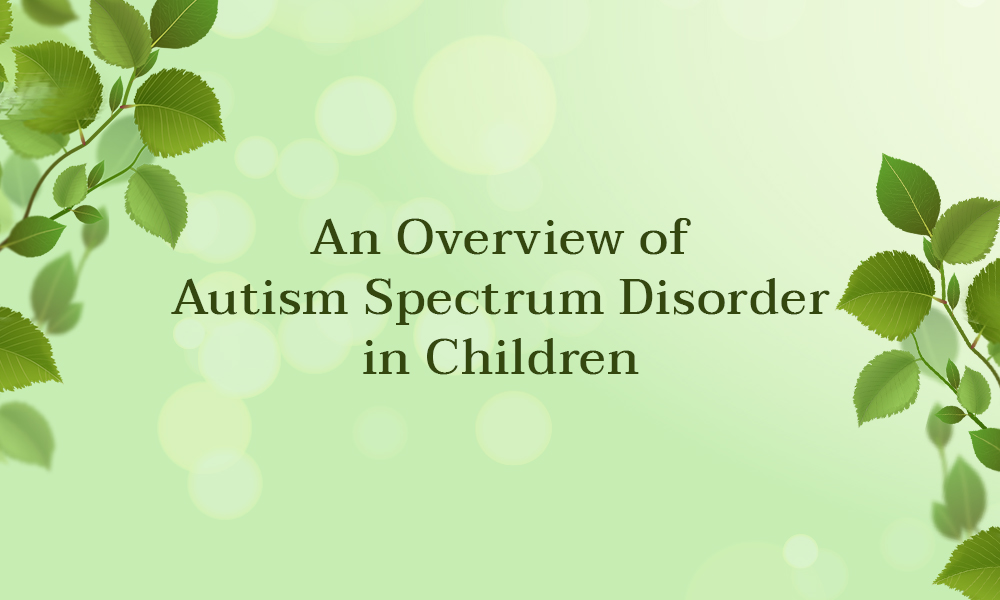- Jofa Tower 5th floor, SB-23, Block 13 C, Main University Rd, Gulshan-e-Iqbal, Karachi.
- +92 322 3746726
- tis@transformation.com.pk
Autism Spectrum Disorder (ASD)

Autism Treatments
June 21, 2023
What is Child Psychotherapy?
June 21, 2023An Overview of Autism Spectrum Disorder in Children
Autism Spectrum Disorder (ASD) is a developmental disability that can cause major behavioral, social and communication challenges. A person with autism spectrum disorder cannot be distinguished from a non-sufferer just on appearance. As it is sometimes difficult to distinguish persons with autism spectrum disorder from others based just on appearance. The sole difference between those who have this disease and the rest is how they may interact, communicate, and conduct themselves.
Some ASD patients require more assistance in their everyday lives than others do. It is because the thinking, learning, communication and problem-solving abilities of people with ASD range from gifted to normal.
Previously identified as a discrete diagnosis, ASD now encompasses illnesses including Asperger syndrome, pervasive developmental disorder, and autistic disorder. These all fall under the umbrella term of autism spectrum disorder today.
What are the Key Symptoms and Signs of Autism in Children?
People with ASD struggle with their emotional, social, and communication abilities, as was already established. Their everyday activities may display repetitious conduct. Many individuals with ASD exhibit a variety of learning, responding, and behavioral tics. Any sign of ASD begins in childhood and typically lasts throughout a person's life.
Social Difficulties:
Children with ASD may have difficulty making eye contact, understanding social cues, and engaging in age-appropriate social interactions. They may struggle with sharing interests or emotions with others.
Communication Challenges:
Some children with ASD may have delayed or impaired speech and language skills. They may struggle with initiating or sustaining conversations, understanding nonverbal communication (e.g., gestures), and using and understanding facial expressions.
Repetitive Behaviors:
Children with ASD often engage in repetitive behaviors or interests. This can include repetitive body movements (e.g., hand flapping, rocking), a strong need for routine and sameness, and an intense focus on specific topics or objects.
Sensory Sensitivities:
Many children with ASD may be hypersensitive or hypersensitive to sensory input. They may have heightened sensitivity to certain sounds, textures, tastes, or smells, or they may seek out sensory stimulation by engaging in repetitive behaviors or seeking deep pressure.
Restricted Interests:
Children with ASD may develop intense and narrow interests in specific topics, objects, or activities. They may have a deep knowledge of these interests and want to talk about them extensively.
Difficulty With Transitions:
Changes in routine or transitions from one activity to another can be challenging for children with ASD. They may become upset or anxious when faced with unexpected changes or have difficulty adapting to new situations.
Impaired Social Imagination:
Some children with ASD may have difficulty understanding and engaging in imaginative play or pretend scenarios. They may struggle to grasp concepts of fiction, make-believe, or understand other people's perspectives.

How are Autism Spectrum Disorders in Children Diagnosed?
As there is no medical test, such as a blood test, to determine symptoms and problems, diagnosing ASD is challenging. The growth and behaviors of a kid are examined by doctors when making a diagnosis.
At 18 months or younger, ASD can be recognized. By the age of 2, a diagnosis from the top neurologist or another similarly qualified experienced expert can be regarded as extremely reliable. However, some kids don't get a definitive diagnosis until they're considerably older. Children with ASD may not receive the early assistance they need as a result of this delay, which is a concern.
What might be the causes of ASD in children?
The whole list of ASD causes is unknown. It has been shown that there are several reasons for the various forms of ASD. In actuality, a kid may be more likely to have an ASD due to a variety of reasons, including biological, environmental, and genetic ones.
Various scientists agree that genes are one of the significant risk factors that can make a person more likely to develop ASD. Children having a sibling with ASD are at a higher risk of also having ASD. Individuals with certain chromosomal and genetically modified conditions, such as tuberous sclerosis or fragile X syndrome have a greater chance of having ASD. The prescribed drugs "thalidomide" and "Valproic acid", taken during pregnancy, have been linked with a higher risk of ASD. As per some available evidence the critical period for developing ASD occurs during, before, and immediately after birth. Children born to older couples are at higher risk for having ASD.
It's critical to remember that every child with ASD is different since the disease is highly individualized. There might be a wide range in the intensity of symptoms, areas of strength, and support requirements. Children with ASD are capable of thriving and achieving their full potential with the right therapies, support, and understanding.




